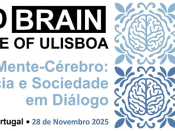Por Sandra Louzada (BioISI/UTAD).
Robertsonian translocations (ROB) constitute the most frequent structural rearrangements occurring in the human population and have been associated with infertility, aneuploidies (trisomy 13 and 21) and more recently with an elevated risk for haematological disorders and breast cancer. Despite their frequency and phenotypic outcome, Robertsonian translocations remain poorly characterized. These rearrangements are described to involve the participation of highly repetitive sequences located at the acrocentric pericentromeres, namely HSAT1 (human satellite 1). HSAT1 constitutes the most AT rich fraction of the human genome, and it has been disregarded in genomic and transcriptional studies when compared with the other classical satellites.
Here we show: 1) our strategy to study Robertsonian translocations; 2) our latest results based on HSAT1 monomer copy number and transcript analysis in a wide variety of human cell lines, nuclear organization of HSAT1 transcripts and its role in instability. This study highlights the existence of variations in the number of copies of this satellite and varying transcripts profiles in tumoral and non-tumoral samples. Also, single-cell analysis reveals differences in HSAT1 non-coding transcription through the cell cycle. This work is in line with the increasing amount of evidence on the relevant role that acrocentric pericentromeric sequences have in disease and biological contexts.
Transmissão via Zoom.



















